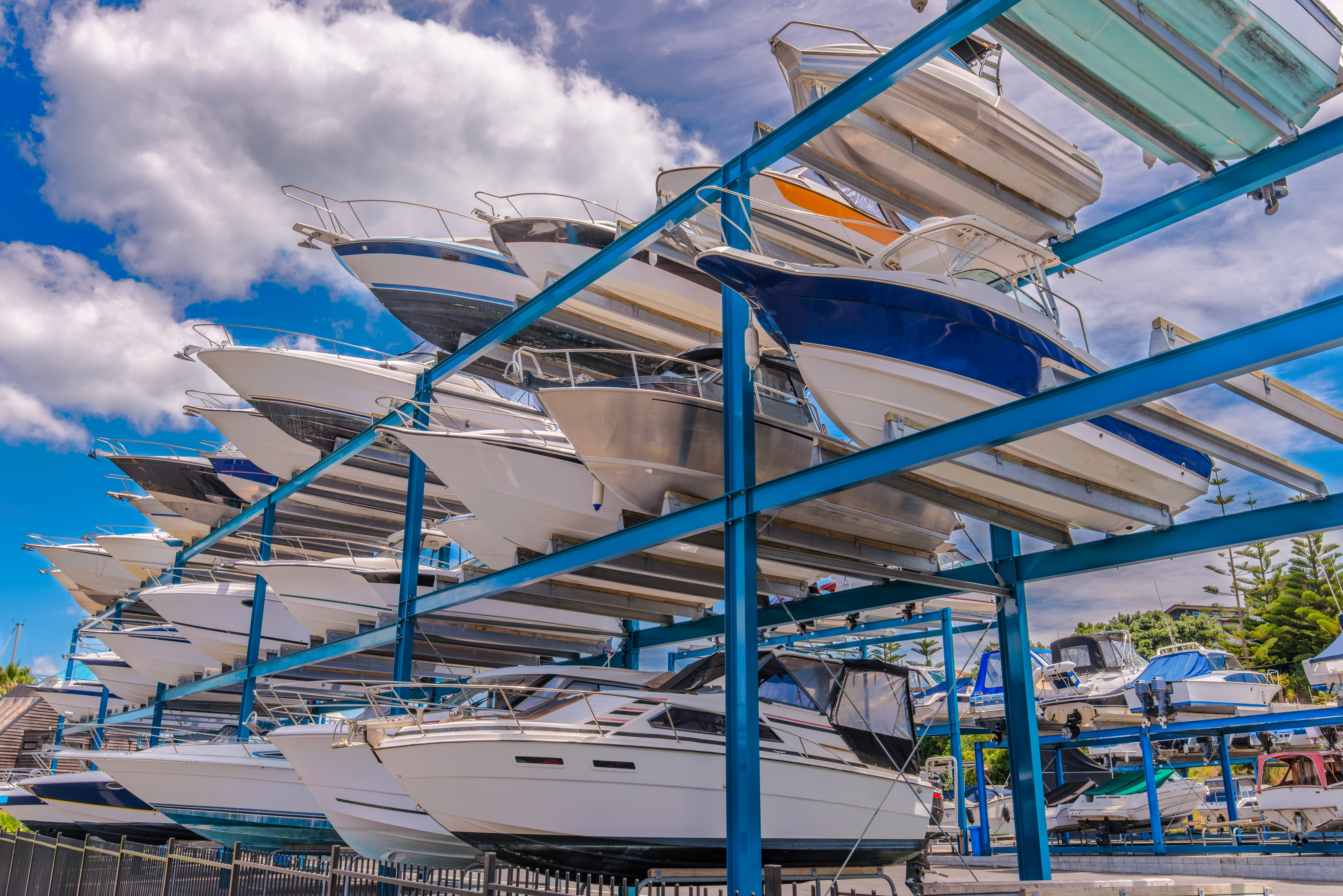If you’re a boat owner, you already know what a relaxing escape your boat offers during warmer weather. However, when winter looms, long lerm boat storage becomes a necessity that many boat owners dread.
The good news is that with a little planning, and knowing the right steps to take, the question of how and where to store your boat gets easier. Whether it’s for off-season storage, winter weather protection, or just to free up storage space in your garage or driveway, following these storage guidelines will keep your boat protected while in self storage.
Boat Storage Options
There are multiple options for storing boats, ranging in price, amenities offered, and availability based on your location and the size of your boat. We break down the different types of options and storage units below.
Indoor Boat Storage
Indoor storage options include a “dry stack” facility, where boats are stacked in a covered warehouse, or a fully enclosed storage unit at a traditional storage facility. This storage option tends to be the most expensive since it provides the best protection from weather and other elements. Storage facilities also offer amenities like climate control and units with electricity. That, combined with 24-hour access, gives boaters the most peace of mind.
Outdoor Boat Storage
As for outdoor options, boat owners can choose to leave it stored in a boat slip that has a dry boat lift, elevating the boat above water. This options is only recommended if you plan to use your boat year round. If not, self storage facilities offer outdoor storage that is similar to a parking space. If outdoor storage is your only option, keep in mind that it’s best to have it on a trailer, shrink-wrapped for protection from the elements, and parked in a secure location to avoid the potential for theft.
Covered Boat Storage
Similar to outdoor boat storage, this option is like a parking space but has a canopy for roof coverage. These tend to be cheaper than indoor dry storage, but won’t offer the same level of protection from weather, so you’ll want to make sure to use a good boat cover.
Regardless of the option you choose, you should always look for a self storage option that includes amenities like 24-hour access and security surveillance.
Storage tips to prepare your boat for storage
Whether you’re choosing an outdoor option or an enclosed storage unit, here are the extra steps you need to take before putting your boat in long term storage.
- Prepare the engine for storage by emptying all water from it.
- Top off the fuel and add fuel stabilizer. Be sure to run the engine afterward, ensuring that the stabilizer is integrated with the fuel in the tank.
- Drain all of the craft’s sinks, tanks, and heads, as well as the current coolant. You’ll then want to fill it with fresh antifreeze to keep the engine guarded from extreme winter temperatures.
- Empty the bilge, clean it and make sure that it is fully dried.
- Clean all the upholstery and floors thoroughly to avoid mold growth while it is covered.
- Disconnect all batteries and any electrical systems to avoid corrosion.
- Spray protective anti-corrosion wax on the engine parts such as hose clamps, battery terminals, and anything else that can corrode.
- Protect your boat from weather elements with a good boat cover.
How to find the best boat storage prices
Finally, keep in mind that all storage prices will depend on the size of your boat, so knowing its exact measurements is a must when calling around. If price is a concern, too much knowledge is better than being blindsided. The best advice is to compare multiple facilities before making the decision. You can browse many different long term storage options using SelfStorage.com’s boat storage finder.





